Astell&Kern – SP1000M
The SP1000M is my favourite product of Astell&Kern so far. Great form factor, great sound, good battery life and great user interface. It ticks all my boxes for a superb DAP.
I bring out the SP1000M especially for monitors like the Fusion. It brings some extra body to the table, that pushes the Fusion more to my preference sound. Bass is a bit bigger, well controlled and fast. It’s tight and well formed. Still, it doesn’t have the biggest body or highest weight.
Mids are natural, yet more on the lighter side. Instruments and vocals sound fast, precise and snappy. Singers enjoy good emotions and good amounts of air. There is good transparency throughout the entire midrange. It’s a well structured sound, that keeps everything in order. Orchestras, big bands or information overloaded Electronica is dissolved very well with the Fusion in this pairing.
Treble is a bit more forward and thinner with the SP1000M. It’s fast, agile, bright and crisp, but sounds as said, a touch thinner.
Chord Electronics – Mojo
With the Mojo you get a very well controlled low-end and a detail overflow. Together with the Fusion it creates a convincing pairing that oozes of information and technicalities. It’s a sound that’s fast, precise and above all pure. I don’t get any blemishes at all. You get a dark background and a nicely deep stage.
Bass is well controlled, fast and has great texture. You get more body throughout and an overall more organic signature. Mids are a bit richer in tone with good intensity. Instruments sound denser and fuller. There is good emotions in the vocals, which makes them sound very convincing and realistic.
Instruments are separated with precision and enough air around them to give them space to breathe. You get a wide-spread stage, with impressive resolution. Each note, no matter what coordinates it has, gets reproduced with precision and care. It goes without saying, that imaging with the Mojo is right out perfect.
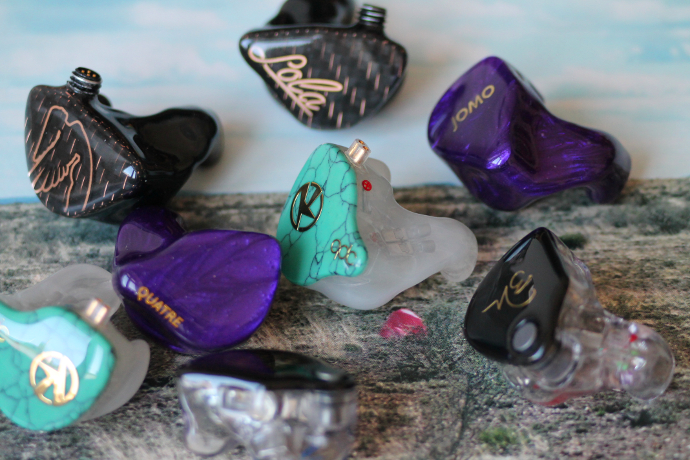
qdc Fusion
Comparisons:
Although in the recent months most companies were pushing tri-level hybrids, we have seen a good number of traditional hybrids in the past. Before we saw the rise of the electrostatic tweeters, DD/BA hybrids were the flavour of the month. It seemed every company tried to get their own design out. qdc probably is one of the last to join the game, but they showed us that they can be very unique in a crowded scene.
Let’s find out how the Fusion compares against other hybrid monitors in my collection. I can’t compare the qdc against something I have not spent considerable time with listening to. I will never make any calls on short-term sessions or show conditions. Those are not valuable in my opinion.
Mentioned prices are in USD and for the custom built versions. Some manufacturers offer the universal models cheaper, like qdc. I have exclusively used stock cables.
64 Audio – N8 (1DD/8BA; $ 1,699)
The N8 is a more conventional hybrid design. It features a more pumping and prominent low end, that goes deeper and makes bass-instruments sound fuller and bigger. If you like a smooth bass, this is the one to get.
Fusion has a much lighter sound, that places midrange more forward, while the N8 has an emphasis on lows and highs. The 64 Audio hybrid sounds a bit darker and smoother overall. The Fusion brings out details more obvious. Both monitors have very good resolution, but the Fusion displays them in a more upfront manner.
Mids on the N8 are denser, thicker and warmer. They sound more meaty and fuller. The Fusion’s midrange is aiming for speed, clarity and precision coupled with emotions. The qdc does give vocals a more agile approach, while the extra weight of them in the N8 makes them more relaxed.
The tia high driver in the N8 gives it a brighter, faster and sharper sound compared to the treble of the Fusion. The qdc is more laid-back and calmer. It doesn’t sport the extension or the crispness of the N8, but it on the other hand is less fatiguing.
The Fusion creates a wider sound stage, it stays more structured in complex situations and to me seems more precise. It has a darker background, where instruments appear more in a spotlight compared to the interlaced N8.
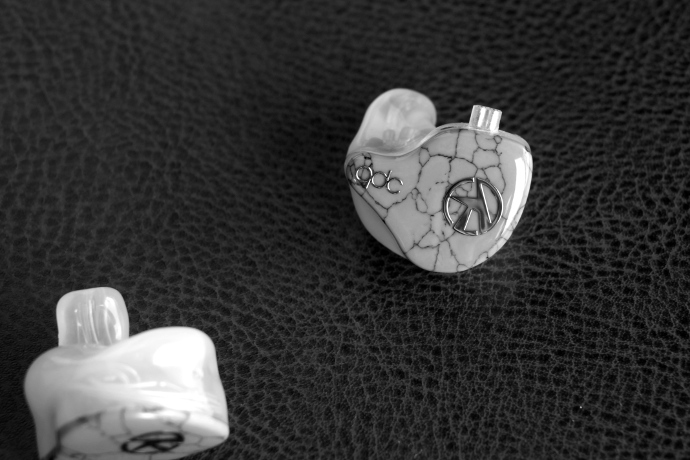
qdc Fusion
JH Audio – Lola (2DD/7BA; $ 1,750)
The Lola is a completely different beast. It uses a dual dynamic driver set-up for midrange. Overall the JH Audio sounds darker, thicker and much warmer than the Fusion. The qdc has a more forward upper mid and treble section.
Fusion does not extend as wide as Lola, but gives thicker density to the low-end notes. The Lola seems more relaxed and laid-back in its bass section, while the Fusion is more active and faster. Its resolution is ahead. It has a tighter but lighter sounding bass. Lola gives more body, more soul and more blood into the entire scene.
Lola’s midrange is one of the very nicest I have ever heard. It’s full, engaging, romantic and emotional. It sports great levels of richness and enough warmth to sound organic. The Fusion is going for a different tuning, with lesser body, a faster sound and unmatched precision. Fusion separates instruments with much higher precision. It has a darker background. This is one of Lola’s biggest shortcomings in my opinion. It can sound fuzzy and bloomy. Especially if it doesn’t get the juice it asks for. Lola is one of those few monitors that demand a the right power.
The qdc Fusion has a more upfront treble section. Lola’s highs often sound muted and shut-off. The Fusion gives more attention to the high notes. Treble shines brighter, it’s faster, richer and crisper.
Jomo Audio – Quatre (1DD/3BA; $ 1,499)
Jomo’s Quatre is probably the one that’s closest to the Fusion’s tuning. Although they also aren’t very similar. The Quatre is certainly the most balanced of all hybrids in this section. Quatre gives lows a higher priority compared to Fusion. Bass on the Jomo is bigger, more forward and slower. The Fusion is tighter, has less grunt and thunder. It has a thinner body, but higher density.
The Quatre has a smoother, more organic midrange, that’s biggest fault is a smeared presentation. Fusion separates each musician with higher accuracy, higher precision and makes a cleaner cut. The qdc has a blacker background, better imaging and creates a wider and deeper stage. It seems to be more in control, when it comes to handling big orchestras.
The Fusion is tilted more towards midrange and upper mids, while the Quatre seems to go even-handed throughout the frequency response. Treble on the Fusion appears faster, sharper and brighter. The Quatre does not extend as wide as the Fusion, and also seems to have a tougher time to let treble shine. Fusion tickles out more information and presents those details more clearly too.
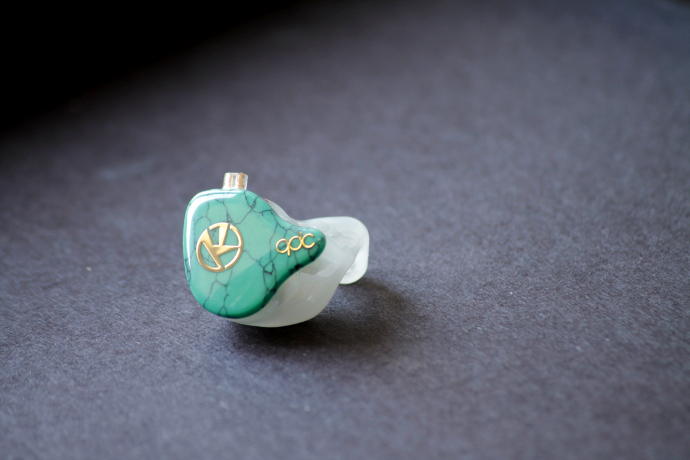
qdc Fusion
Conclusion:
qdc only entered the hybrid-games very late. But they did that with a very different product. The Fusion is unlike any hybrid monitor I have heard yet. Most of them try to overpower you with a big bass, recessed mids and an energetic top. The Fusion creates a mid-centric signature, that convinces with emotions, ease and high levels of technicalities.
Fusion follows a path, that hasn’t been gone down by many. Only a few monitors come to my mind, that place mids above all. I admit, it took me a while to really get to enjoy Fusion’s sound. Especially when coming from monitors that feature a lot of bass, it can sound less entertaining. After a few listens, it really got to me though.
Fusion’s strengths definitely are in its stage construction, imaging and resolution. For the asking price qdc offers a lot. If you’re seeking a more powerful low-end, bigger body and more intimacy, the Fusion won’t be the monitor for you. If, on the other hand, you enjoy emotion, air and a presentation to dive into, the qdc might be worth your attention.





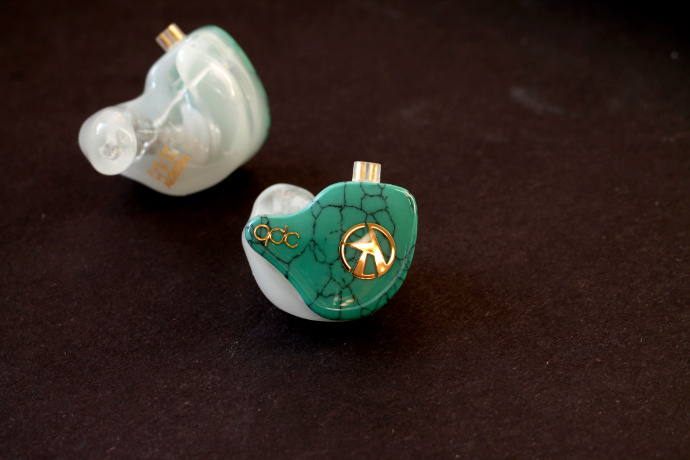

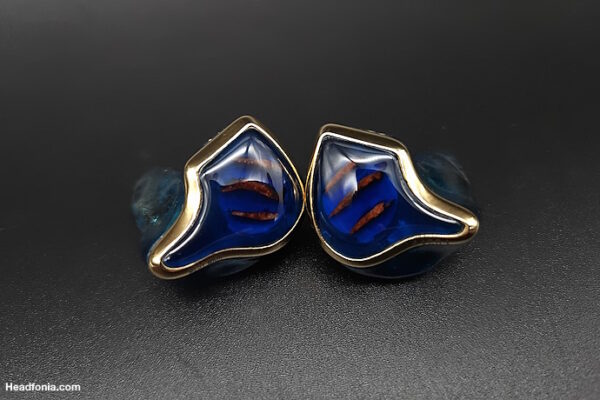
Adrián
Yo ya pedi los fusion, estoy con los ojos cerrados. Tengo los fiio fh7, se que están en un nivel más bajo, sin embargo me gusta su tonalidad y firma y como suenan con mi oppo h2a y mi q5 amd con 4,4 balance, sacando el audio de mi ibasso dx80. Espero tener mayor calidad con este IEM fusion y que juegue bien con mis dac y amps.
NIHAL
Hey how does it compare to Camfire Audio Andromeda? Any better?